The ‘Active Home’ concept, the newest trend in global architecture, reaches Russia

In mid-October, the First International Conference, dedicated to the ‘Active Home’ concept, was held on the sidelines of Architectural Festival ‘Architectonics-2011’, a reality that signaled that the so-called ‘Active Home’ concept, the newfangled construction trend in global architecture, has finally come to Russia. An Active House, the new European concept in world architecture, envisages the construction of houses via the use of perfect combination of modern architectural technologies and most advanced innovations in the IT and construction industries. The ultimate goal is to create the most optimal conditions for life, health improvement and wellbeing of a modern person that is living in an era of digital innovations.
During the Architectonics-2011 conference, leading construction professionals from around the world, recognized experts in the field of ‘green buildings,’ discussed the future development of energy-efficient technologies in the construction industry in the world in general, and Russia, in particular. One of the main events of the festival was the official presentation of the Active Home project and the announcement of the ‘Model House-2012’ Contest that will determine the best architectural project in countryside houses.
“The term, Active House, a new European concept in world architecture, envisages the construction of houses via the use of perfect combination of modern architectural technologies and most advanced innovations in the IT and construction industries.”
The contest is organized by companies that implemented the first ‘Active House’ project in Russia. Among them are Zagorodny Proekt Company, one of the leading Russian real estate properties developers in the Moscow Region, and VELUX, a Danish company, and the world's leading manufacturer of roof windows, and supported by the Russian Union of Architects (RUA) and the Green Building Council. The results of the contest will be announced at the Arch Moscow International Exhibition of Architecture and Design in May 2012.
In accordance with the Active House concept, a model active house should be energy-efficient, create a healthy climate for its inhabitants, have the lowest negative impacts on the environment, and at the same time, be accessible to a wide range of customers. The winning project will be built in the Zapadnaya Dolina or ‘Western Valley,’ a new residential community currently under construction in the Moscow Region and be added to the group of projects developed by Zagorodny Proekt.
The transformation of the ‘Active House’ dreams into a reality
More recently, discussions about technologies to build ‘active green houses’ were only held as parts of theoretical brainstorming sessions at various local and international conferences and workshops on innovative housing. But this fall, the fruits of real practical implementation of these theoretical brainstorms finally reached Russia, as the first ‘Active House’ was put into operation in the Western Valley in September. The project was planned and coordinated by Zagorodny Proekt Company, in cooperation with the VELUX Group, which is working hard today on the solutions of tomorrow by promoting architecture that enhances our quality of life and the sustainable development of society.
The First Active House in Russia was designed to set a new standard for residential house construction in Russia. The design is based on the Active House principle of reaching a balance between energy saving, healthy indoor climate and care for the environment, all of which add to the architectural quality and well-being of the residents. This Active House is a pilot project, a prototype of an individual house construction, whose main purpose was to demonstrate that it is possible to build an energy-efficient house in Russia − with the right combination of architectural design, engineering and materials.
 An Active House creates healthier and more comfortable indoor conditions for occupants and ensures a generous supply of daylight and fresh air. It was the scaled down model of this house that was on display during the festival at the stand of VELUX, the chief ideologue and one of the most active partners behind the realization of the first ‘active green house project’ in Russia. It will not be out of place to note that the unique project enjoyed great popularity, both among professionals in the field of ‘green buildings and other top experts in related fields as well as potential homebuyers at the ‘Architectonics-2011’ festival.
An Active House creates healthier and more comfortable indoor conditions for occupants and ensures a generous supply of daylight and fresh air. It was the scaled down model of this house that was on display during the festival at the stand of VELUX, the chief ideologue and one of the most active partners behind the realization of the first ‘active green house project’ in Russia. It will not be out of place to note that the unique project enjoyed great popularity, both among professionals in the field of ‘green buildings and other top experts in related fields as well as potential homebuyers at the ‘Architectonics-2011’ festival.
The special significance of this project was underscored by the presence of senior representatives of the Russia and Danish governments at the official opening of the pilot active house worth one million euros. Notably among the VIP guests were His Royal Highness Crown Prince Frederik of Denmark, Russian presidential aide Arkady Dvorkovich, First Deputy Chairman of the Moscow Region government Igor Parkhomenko, the region’s Construction Minister Pavel Perepelitsa and Foreign Economic Relations Minister Tigran Karakhanov.
It needs be noted here that the Crown Prince visited Russia specifically to obtain via this project a first-hand view of the adoption and implementation of recent European engineering and construction technologies in the country. This also explains why the official launching ceremony of the first active green house was one of the activities that the Crown Prince graced with his presence and personal participation within the frameworks of his visit to Russia.
Judging by the Crown Prince’s jovial mood, one could conclude that the future King of Denmark was very pleased with the realization of the dream project of building a modern, energy-efficient house that is both comfortable and useful for its inhabitants and environment. The house is energy efficient and easy to operate. To reduce CO2 emissions and optimize energy performance, the building must be considered as a whole, not just as the sum of its components. For example, by using high quality insulation and innovative building technologies, the ‘active house’ has set a new set of standards in the construction.
For instance, energy construction is 4 times lower than the existing standard, and its rate of natural light is 10 times higher than standard. Heating and hot water are provided by a geothermal heating pump and solar panels and batteries, and the presence of "hybrid ventilation" with recovery and conservation of thermal energy, have made the house independent of the city heating network. Besides, all the engineering life-support systems are combined and integrated into a single automated control system that monitors the levels of temperature, light, CO2 and humidity. All this helps create a comfortable and an ideal climate for living.
The official opening ceremony
The opening ceremony of the ‘Active House’ took place in two stages: the business part that featured a press conference dedicated to the prospects of ‘green building technologies in Russia, and official opening, where, after the obligatory official speeches, the Crown Prince and Dvorkovich cut the red ribbon, thus putting into official operation the first active green house, created in full conformity with the European concept of Active House, in Russia.
Chief speakers at the press conference were the initiators of the project and representatives of supporting organizations: Zagorodny Proekt Co. Board Chairman Dmitry Aksenov, Oleg Panitkov, VELUX’s business development director in Russia, Russian Union of Architects President Andrei Bokov and Alexander Leonov, an architect with the Russian architecture firm, Polygon Lab, a subsidiary of Zagorodny Proyekt Co.
 Speaking at the press conference, Aksenov noted that the Active House project experience has allowed him and his team to better understand the philosophy of sustainable development. “Our task, as a company, is not only to build and sell houses, but also to create comfortable and healthy environments in harmony with nature,” he added. “We hope that, together with our partners, we can lay a solid foundation for the establishment and development of sustainable building practices in Russia. The Active House will hopefully become an open forum for discussions; we will be monitoring the house throughout the following year and hope that the interest in the project and Active House thinking will continue to grow.”
Speaking at the press conference, Aksenov noted that the Active House project experience has allowed him and his team to better understand the philosophy of sustainable development. “Our task, as a company, is not only to build and sell houses, but also to create comfortable and healthy environments in harmony with nature,” he added. “We hope that, together with our partners, we can lay a solid foundation for the establishment and development of sustainable building practices in Russia. The Active House will hopefully become an open forum for discussions; we will be monitoring the house throughout the following year and hope that the interest in the project and Active House thinking will continue to grow.”
From his side, Jorgen Tang-Jensen, CEO of the VELUX Group, call the Active House concept the way forward. “An Active House is designed to work in harmony with nature, to use the energy of the sun and wind intelligently and to encourage a sustainable lifestyle. And we must make sure that architecture and good indoor climate get just as high a priority as energy saving,” he added. “As a private company, we regard it as a part of our corporate responsibility to share our knowledge of daylight and indoor climate as an active contribution to meeting the challenge of reducing energy consumption and CO2 emissions.”
The RUA president was also highly impressed by the country's first ‘active green houses’ and the high standards of advanced building technologies used in its realization. “Zagorodny Proekt Company and VELUX have assumed the role of conductors of European values to our country. The architectural solution of the ‘active house’ envisages the highest European standards of comfort and environmental friendliness. Besides, apart from being the source of a healthy environment and an example of complicated engineering structures, the ‘active house’ still simply remains a comfortable and beautiful house that it is always pleasant to come back to.”
Exorbitant price may an insurmountable obstacle
Despite the positive sides of this project, one highly significant problem may permanently make the obvious desire of Russia's active house pioneers to turn this project into a mass phenomenon in the country a practically unattainable dream or difficult process. This problem is the sky-high cost of ownership of such houses today, as the preliminary cost of the ‘pilot house,’ according to the most conservative estimates, currently stands at about 28mln.rub, a figure that will certainly put the house out of the reach of most homebuyers. However, all the participants in the pilot project are hoping that together they could make the Russian project really affordable for most homebuyers.
“In accordance with the Active House concept, a model active house should be energy-efficient, create a healthy climate for inhabitants and have minimal negative impacts on the environment.”
Not surprisingly, this problem is now a big source of concern for the pioneers of the newfangled European ‘Active Home’ concept in Russia. Thus, commenting on this perspective, Zagorodny Proekt Co. CEO Andrei Vasilyev said that the high price issue and the ways to reduce it remains one of the unsolved problems on the road of commercialization of active green houses in Russia. “Today, one of the main open issues today is how to move the construction of such houses from the experimental to mass-scaled production, and their prices from sky-high levels to a range, affordable value by all everyone,” he added. “This is the goal of the organizers of the ‘Model House-2012 Contest. Probably, in November, we shall be able to put before the professionals in our industry projects that will be the basis for mass construction of ‘active houses’ in the future.”



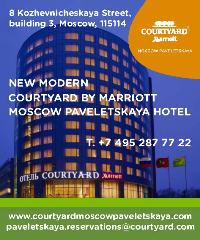
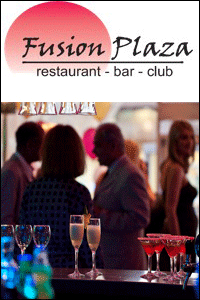


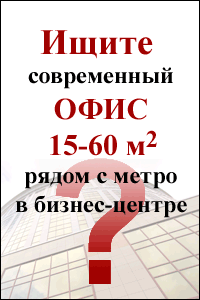
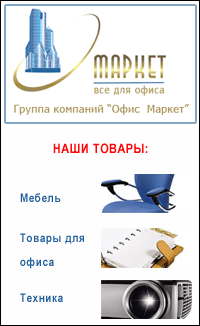


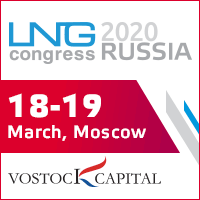
 Web design,
Web design,